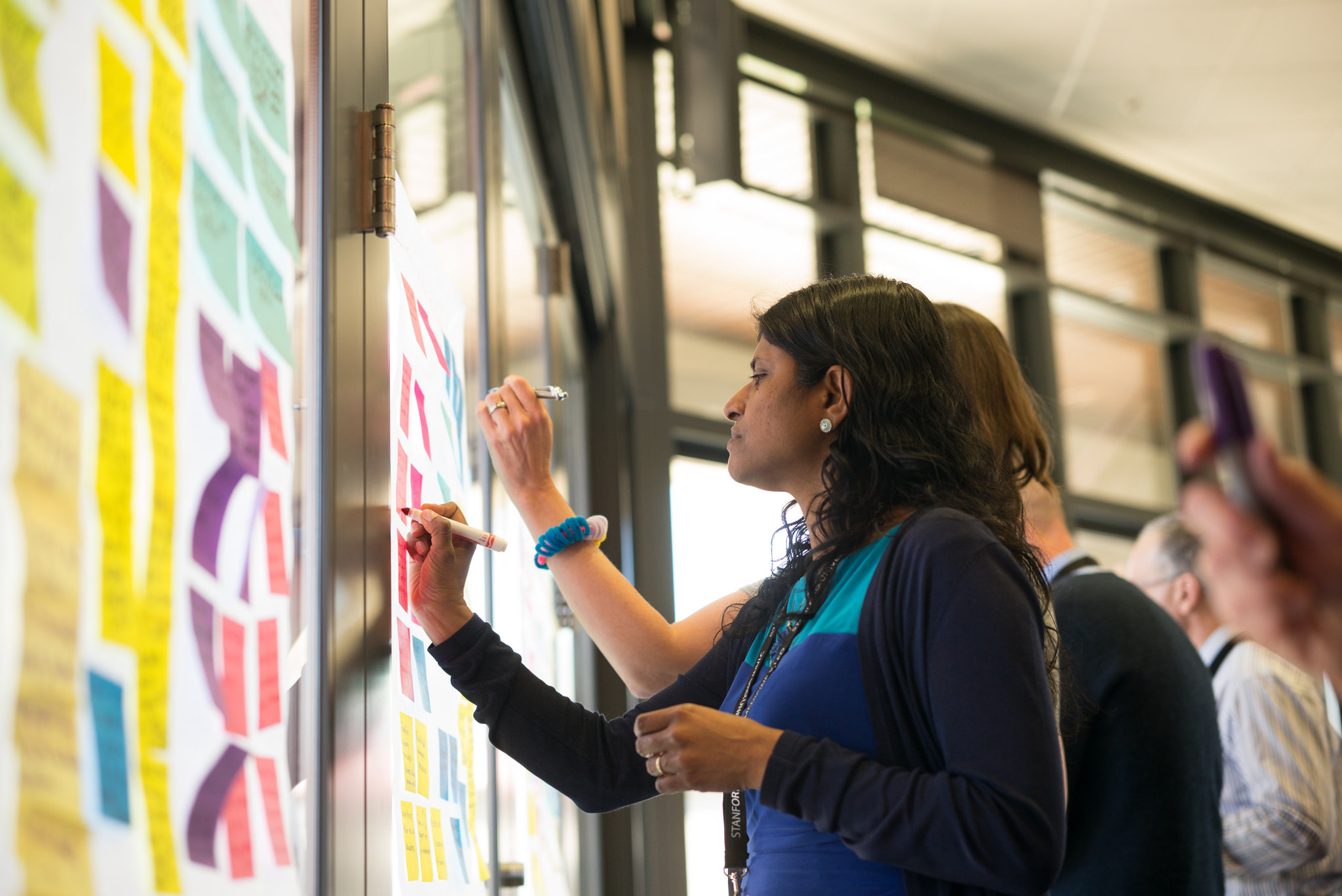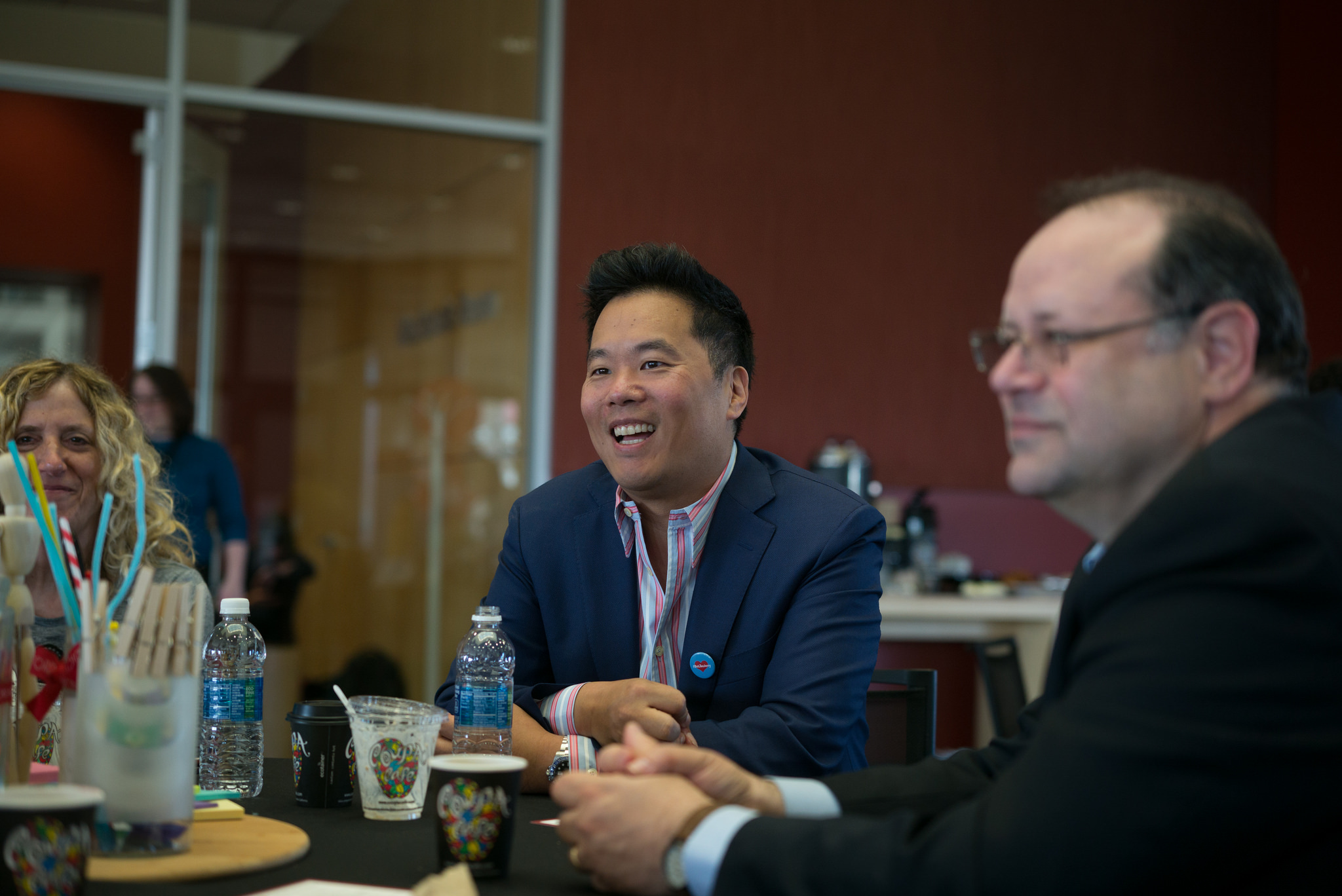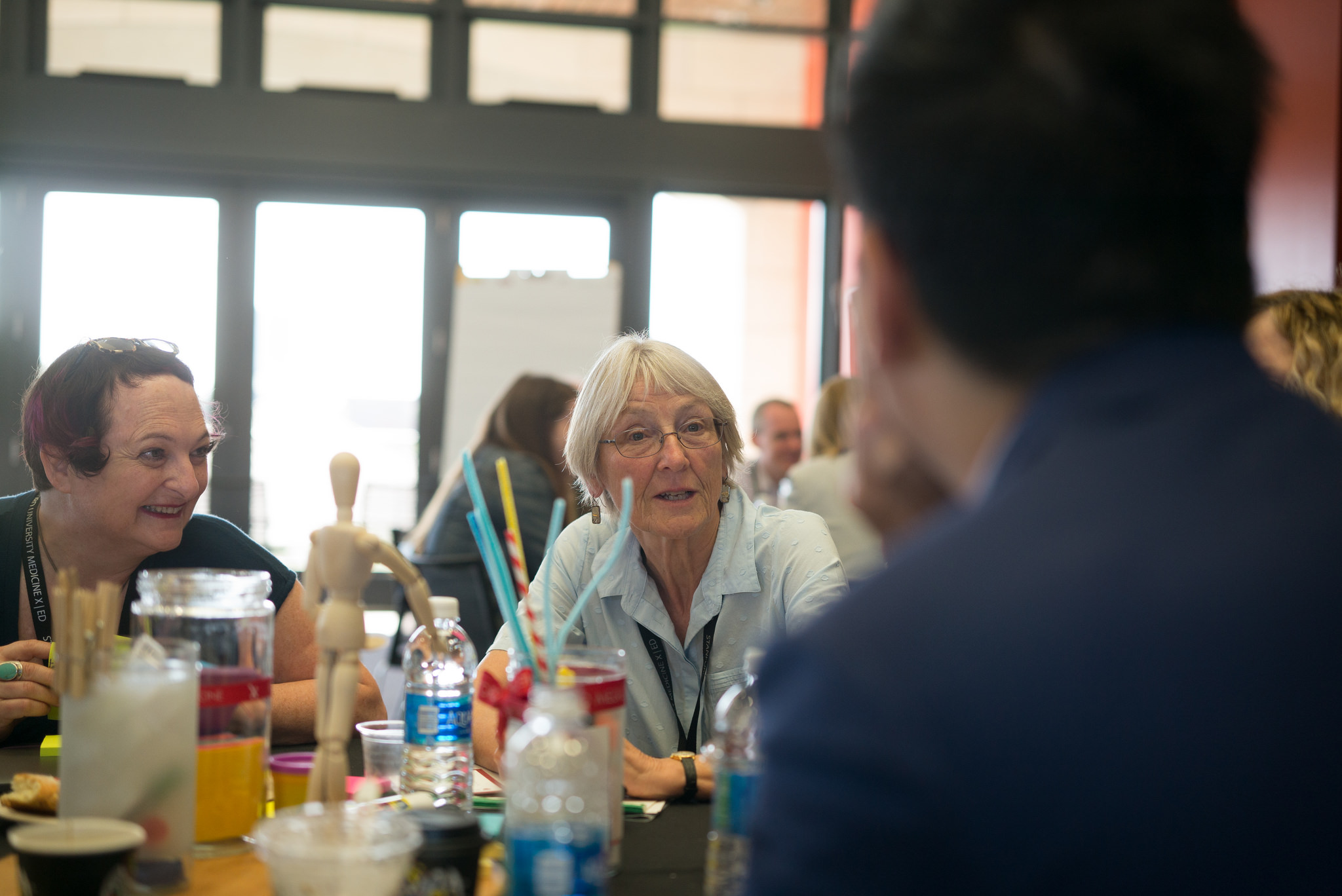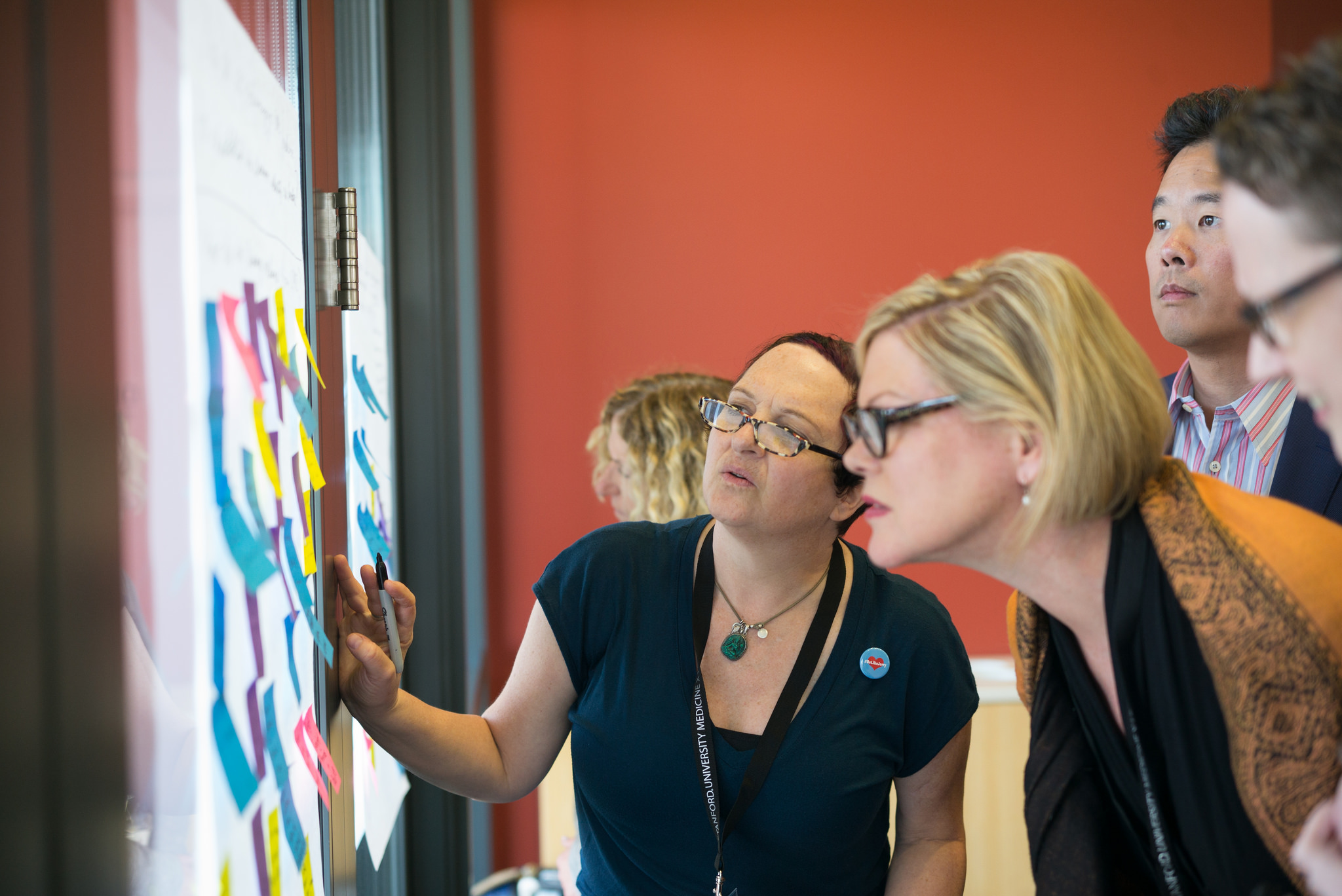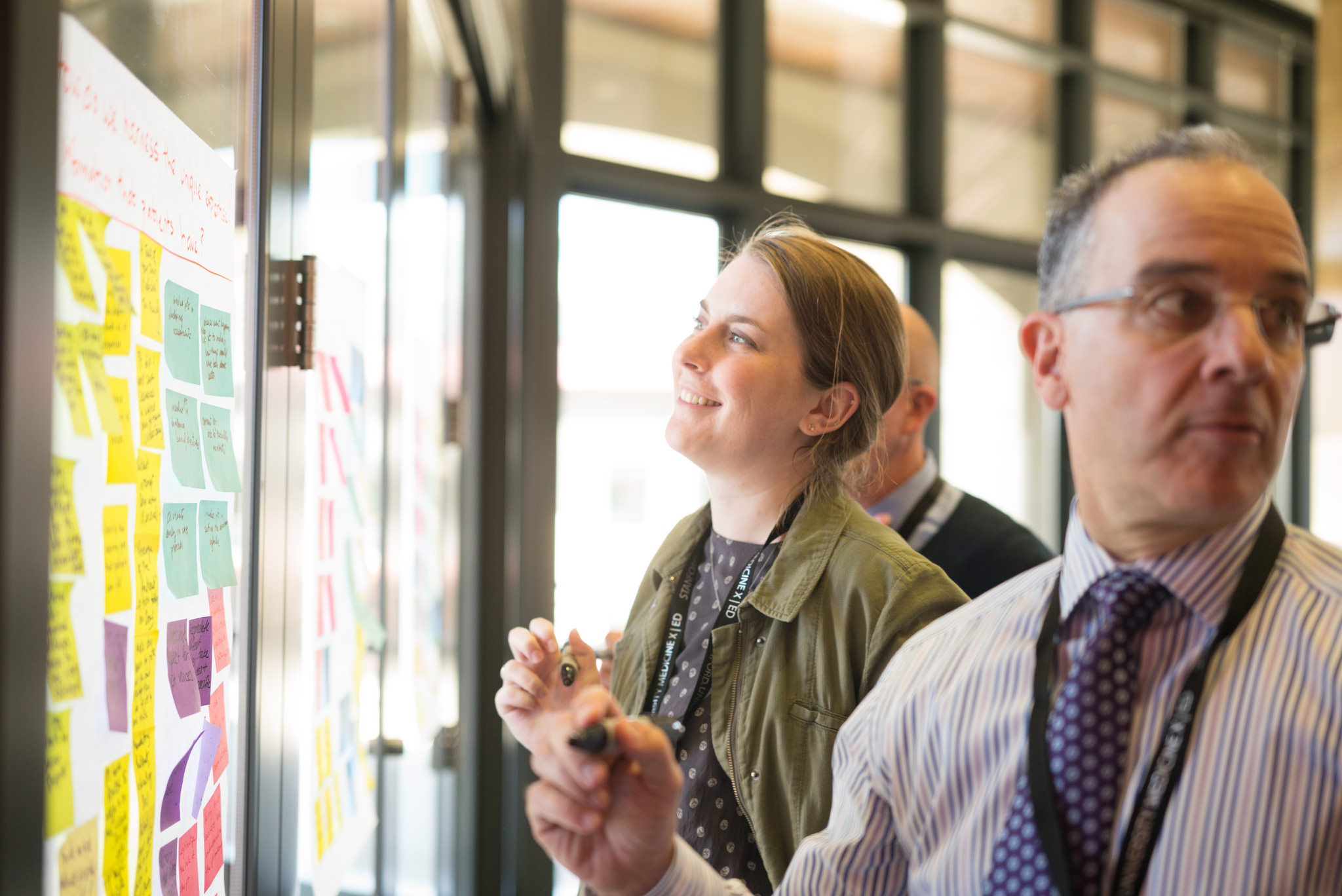co-creating national standards on cme co-production in partnership with patients
Date: April 2017
The problem we were trying to solve
Continuing medical education consists of educational activities which serve to maintain, develop, or increase the knowledge, skills, and professional performance and relationships that a physician uses to provide services for patients, the public, or the profession. The content of CME is that body of knowledge and skills generally recognized and accepted by the profession as within the basic medical sciences, the discipline of clinical medicine, and the provision of health care to the public.
Patients have traditionally seen minimal involvement in the CME process as curriculum creators, educators, or participants. Although research has shown that patient inclusion does indeed enrich CME, CME creators are still unsure as to how they might meaningfully engage with patients. The Accredidation Council for Continuing Medical Education, also known as ACCME, collaborated with Stanford Medicine X in 2017 to create a set of design principles for patient engagement in CME.
Research approach and methods used
The Stanford Medicine X design team worked directly with the president of ACCME, Graham McMahon, to lay out a strategic plan for the design initiative. After defining our challenge, which was to make the CME process more inclusive of patients in an effective and meaningful manner, Medicine X organized a design workshop at the 2017 Medicine X | ED Conference.
A group of 50 providers, patients, educators, and health care administrators convened at Stanford in April of 2017. During our half-day workshop, participants shared their own experiences, success stories, and challenges with continuing medical education. With the help of design facilitators (including designers, patient advocates, and medical educators), participants also documented key themes and future opportunities for success in continuing medical education.
Following the workshop, the Medicine X Studio team documented, archived, and uploaded the thousands of insights generated from the workshop. Our Medicine X Studio team worked to consolidate and organize the contributions, into insight statements, or opportunities for learning.
One recurring theme in the workshop was fear. The design research phase helped us reach an interesting insight: The opposite of fear isn’t courage, but curiosity. With this information, the Medicine X Studio team asked ourselves: How might we foster a culture of curiosity in continuing medical education? Sifting through the thousands of notes from the workshop, we structured three key insights:
- Medical students, patients, and providers are more likely to retain information if they are inherently curious about the material and each other.
- CME learning is more highly optimized when patients and providers are given a safe space to learn from each other.
- Patients and providers involved in CME are most engaged when learning from individuals from different backgrounds, cultures, expertise, etc.
After we defined our themes and insight statements, we worked to identify how these insight statements might become design principles, or clear, decisive, decisions that laid out a clear path for individuals and organizations looking to meaningfully engage with patients as participants and partners in continuing medical education.
Key learnings
Build trust by cultivating empathy and shared vulnerability through the power of storytelling, and by giving people the permission to be human.
At Medicine X, we have found that storytelling is an incredibly powerful tool to cultivate both empathy and shared vulnerability. We encourage storytelling through our main-stage talks at Medicine X, along with our ePatient films. In the process of creating a safe space for storytelling, we’ve created a culture of openness, understanding, empathy, and shared vulnerability.
Co-create with patients early in the curriculum development process by actively involving them in the development, delivery, and assessment of CME.
The inception of the Medicine X conference was a serendipitous conversation on Twitter between Executive Director, Larry Chu, and Stanford Health Care patient, Hugo Campos. Their conversation and relationship in the planning of the first Medicine X conference has grown into a culture of co-creation between patients, providers, educators, and all stakeholders in health care.
Inspire curiosity by embracing ambiguity, incorporating broader perspectives, and allowing space for play.
Our annual IDEO Design Challenge is a unique opportunity for providers, patients, industry, and other health care stakeholders to work in an open, creative, and collaborative environment that defers judgement, encourages wild ideas, builds on the ideas of others, and goes for quantity. With our design work at Medicine X, we’ve found that a culture of openness and flexibility often yields the most interesting, creative, and impactful results.
Work in partnership with patients to identify emotional, physical, financial, and logistical barriers to participation in CME to implement practical solutions together.
Medicine X works in partnership with patients to identify emotional, physical, financial, and logistical barriers to participation through a wide variety of programs. The Medicine X ePatient Scholarship Program, accessibility surveys, and conference are all developed with patients to properly identify and address barriers to participation Create parity by respecting patients as peers, acknowledging their contributions in ways that are meaningful to them.
At Medicine X, we make a concerted and deliberate effort to elevate respect hierarchies by acknowledging patients’ time and effort, and exploring ways to meaningfully bring value back to the patients for their contributions. In the past, we’ve found that thoughtful gifts of appreciation, acknowledgements of support, and other creative forms of gratitude have come a long way in making patients feel genuinely respected and valued.
Promote diversity in the representation of healthcare stakeholders, industry sectors, and communities in order to reflect the unique nature of the patients’ perspective and how these domains may inform discussions about the future of healthcare.
We also make a concerted effort at Medicine X to create a diverse, open, and welcoming culture by promoting diversity in our ePatient scholarship program, main-stage speakers, and participants, and attendees. Furthermore, in our six years of conference planning, we have created events like the Blockchain Disrupt Hackathon and Med X Night at the d.School that bring non-traditional health care stakeholders into a meaningful and interdisciplinary conversations around health care innovation.
Medicine X | Studio, is the world’s first Everyone Included™ health care design studio. Its purpose is to advance the Medicine X Everyone Included™ framework for health care innovation and our principles for health care co-design with patients, caregivers, providers and end-users of health care. At Medicine X | Studio, we implement these principles and incorporate codified standards through our design projects with the goal of co-designing for a culture of health.
project team members
Larry Chu, MD, Educator Lead
Monika Wittig, Medicine X Project Design Lead
Melissa Hicks, Medicine X ePatient Lead
Janak Chandarasoma, MD, Medicine X Educator
Justin Lai, MPH, Medicine X Studio
Site location: Stanford, California (USA)
collaborating organization
Accreditation Council for Continuing Medical Education. The ACCME’s mission is the identification, development, and promotion of standards for quality continuing medical education (CME) utilized by physicians in their maintenance of competence and incorporation of new knowledge to improve quality medical care for patients and their communities.


